Gorgeous 2017 Solar Eclipse Posters by Astronomer-Artist Tyler Nordgren (Gallery)

The Great American Solar Eclipse
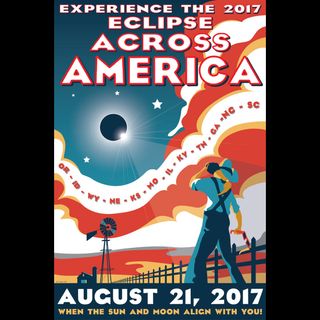
The 2017 total solar eclipse coming Aug. 21, the first total solar eclipse to touch the contiguous 48 states U.S. since 1979, inspired Tyler Nordgren, an astronomer and educator (and something of an eclipse evangelist), to design a series of travel posters. The style of the posters echoes the art commissioned by the National Park Service in the 1930s, created by various artists under the Works Progress Administration. You can see more of Nordgren's work, and order posters for yourself, at his website: http://www.tylernordgren.com/
The path of totality — the region where the moon will completely cover the sun's disk — goes through 14 states. (In some states, such as in Kansas and Georgia, it does so for only a few miles.) The following gallery roughly follows the path the moon's shadow will trace, starting in Oregon at about 10:15 a.m. PDT and working its way across the continent for the next hour and a half, until the moon's shadow leaves the East Coast at 2:48 p.m. EDT.
Nature's Grandest Spectacle
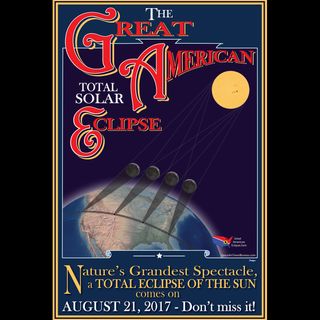
Nordgren has incorporated a classic diagram of the geometry of the eclipse, using this image to illustrate why the eclipse track takes the path it does, and to show why the moon's inner shadow is visible in only a small area.
Oregon
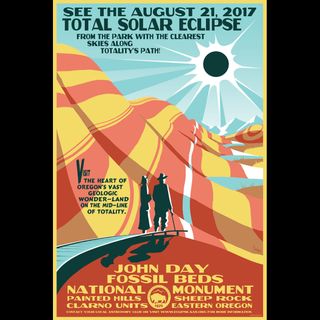
Oregon will be the first U.S. State where the eclipse makes landfall; skywatchers there will see a partial eclipse begin at 9:04 a.m. local time just north of Depoe Bay. Totality will start at 10:15 a.m. While the coastal regions may be dicey for viewing — the Oregon coast is famously cloudy — once you get past the mountains into the eastern half of the state, conditions tend to improve.
Willamette Valley, Oregon
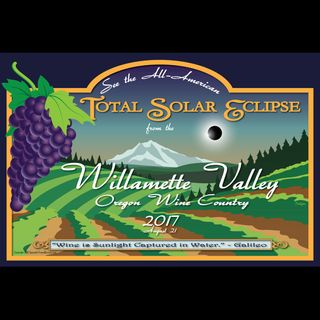
In a region famous for wines, it's no surprise that several wineries have opened their vineyards to eclipse enthusiasts. However, for many, the start of the partial eclipse at just after 9 a.m. local time might be a bit early to start sampling Oregon's famous pinot noirs or chardonnays. But with a rare event like the eclipse, some skywatchers might make an exception.
Oregon
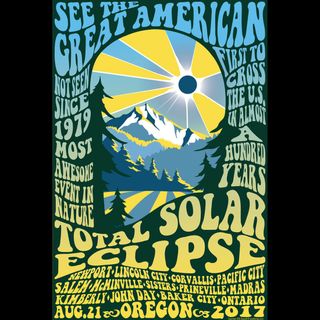
Oregon will be the first U.S. State where the eclipse makes landfall; skywatchers there will see a partial eclipse begin at 9:04 a.m. local time just north of Depoe Bay. Totality will start at 10:15 a.m. While the coastal regions may be dicey for viewing — the Oregon coast is famously cloudy — once you get past the mountains into the eastern half of the state, conditions tend to improve.
Madras, Oregon

Just east of the Warm Springs Indian Reservation at the junction of U.S. Highways 26 and 97, this town will host the Oregon Solarfest. The partial eclipse starts here at 9:06 a.m. local time, and totality will last 2 minutes and 2 seconds.
Grant County, Oregon

Grant County hosts part of the Malheur National Forest, and the poster also notes Route 26, which runs roughly west to east through the towns of Dayville, Mount Vernon and Prairie City. As it happens, every community in Grant County is in the path of totality, but local authorities warn that the expected eclipse traffic will put a strain on local roads and you won't find a hotel room there.
Get the Space.com Newsletter
Breaking space news, the latest updates on rocket launches, skywatching events and more!
John Day Fossil Beds, Oregon
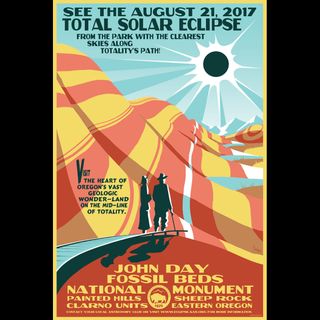
Visitors who want to view the eclipse from the John Day Fossil Beds National Monument will be able to watch from one of three (widely separated) "units" called Clarno, Painted Hills and Sheep Rock. The latter two are directly in the centerline of the eclipse, but even at the Clarno unit, the Park Service predicts a full minute of totality.
Lost River Range, Idaho
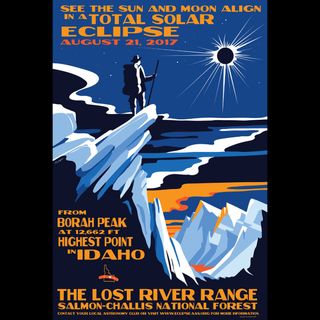
In general, observers have a higher chance of experiencing clear skies on eclipse day in the high-elevation regions of the Intermountain West. Borah Peak is the highest point in the state and will get a full 2 minutes, 11 seconds of totality. The eclipse begins there at about 10:13 a.m. local time.
Jackson Hole, Wyoming

The eclipse starts at 10:16 a.m. local time in Jackson Hole, and totality kicks in at 11:34 a.m., lasting 2 minutes and 15 seconds. There are several eclipse-related events here; one includes rocking out to Pinky and the Floyd, a Pink Floyd tribute band. With Jackson Hole's relatively high altitude, the town has a good chance of offering clear skies for the big event.
Grand Teton National Park

Jackson, Wyoming, the town just outside the park (not to be confused with Jackson Hole) is an early stop for the path of totality; the partial phase starts there at about 10:16 a.m. local time, with maximum eclipse occurring at 11:36. Observers in the park will get a bonus: some of the most striking scenery in the country. There are several open areas in the park to watch the eclipse from if you can't make it to the area.
Join our Space Forums to keep talking space on the latest missions, night sky and more! And if you have a news tip, correction or comment, let us know at: community@space.com.

Jesse Emspak is a freelance journalist who has contributed to several publications, including Space.com, Scientific American, New Scientist, Smithsonian.com and Undark. He focuses on physics and cool technologies but has been known to write about the odder stories of human health and science as it relates to culture. Jesse has a Master of Arts from the University of California, Berkeley School of Journalism, and a Bachelor of Arts from the University of Rochester. Jesse spent years covering finance and cut his teeth at local newspapers, working local politics and police beats. Jesse likes to stay active and holds a fourth degree black belt in Karate, which just means he now knows how much he has to learn and the importance of good teaching.
